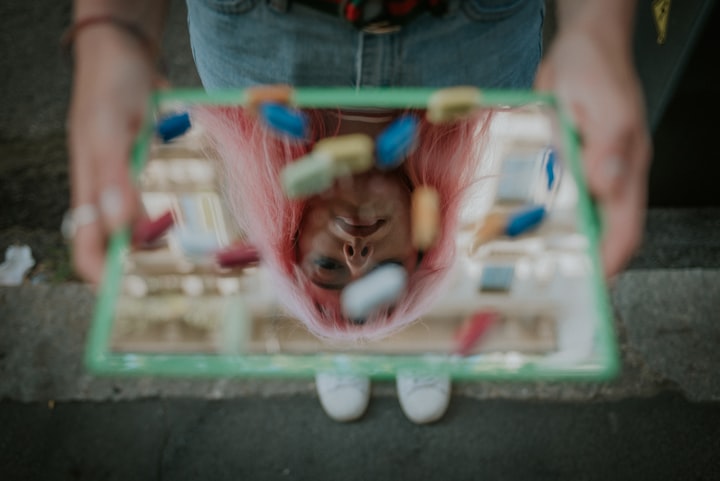10 Things Everyone Should Know About PMDD
Everybody is different because every BODY is different.

My self-care game is strong. It’s had to be. For the last couple of years, I’ve had many physical and mental health symptoms that I didn’t understand. All I could do was manage them. I learned how to listen to my body, and I used every single one of my coping skills. It still wasn’t enough.
When I was diagnosed with Premenstrual Dysphoric Disorder (PMDD), all the missing pieces came together. I didn’t know much about PMDD before I was diagnosed, and it may be the reason it took so long to pinpoint what was happening to me. Let’s take a look at 10 facts everyone should know about PMDD.
1. It’s not the same as PMS.
PMDD is often mistaken for premenstrual syndrome (PMS). Many of the symptoms of PMDD align with PMS — only PMDD is a severe and often debilitating condition that comes with more symptoms. It’s important to understand that they are not the same thing. Too often, the more severe symptoms of PMDD are dismissed and invalidated because it’s mistaken for the less severe monthly symptoms of PMS.
2. There isn’t a single test to determine if you have it.
It would be so much easier if there was a single test that determines if you have it or not. There isn’t. Instead, your healthcare provider has to do a differential diagnosis to rule out other possibilities.
3. Tracking your moods can help.
Tracking my moods was the number one most helpful thing that I did leading up to my diagnosis. I used a daily mood journal for a three-month period, and it was easy to see the pattern. My mood dropped substantially during the same time period every month, right before the onset of a period. Keeping a record of our moods can help immensely when it comes to uncovering the right diagnosis.
4. There isn’t a cure.
Unfortunately, there’s no cure for PMDD. There are only treatments for the symptoms. It’s a chronic condition that we have to learn to manage.
5. No one treatment universally helps every person who has it.
There’s also not a single treatment that universally helps every person who suffers from it. For instance, I take an antidepressant during the time of the month where my mood is most likely to experience a disturbance. I also see a chiropractor, a massage therapist, a mental health therapist, and take vitamins and herbal supplements to manage the symptoms.
Exercise, nutrition, and even something as simple as taking Ibuprofen are all part of my self-care plan. Each of these treatments helps with PMDD, but none of them do it alone. Also, what works for me may not work for someone else who has it.
6. It can come with mood swings that include suicide ideation.
This was the hardest thing to explain to other people. I’ve never been suicidal … until I began to experience PMDD. Then, I had to actively deal with suicidal thoughts every single month for anywhere from a week to 10 days. It was severe, and it also felt incredibly impulsive.
I worried about my own safety, and I had to take extra measures with self-care during this time. The only thing that has helped me feel more like myself has been taking an antidepressant. Even though it’s a low dose and taken during the luteal phase of my cycle, it has relieved the suicidal thoughts that have plagued me for the past two years.
If you experience suicidal thoughts, contact the National Suicide Prevention Lifeline at 800-273-8255.
7. It can hinder impulse control.
Another challenge to PMDD is it can hinder impulse control. This is dangerous because of the suicidal thoughts, but it is also an issue when it comes to dealing with our emotions around sadness or anger. Everything is heightened, and it can feel difficult to practice self-control. Unfortunately, this can put a strain on many relationships in our lives.
8. There are many risk factors.
Risk factors for PMDD include a family history of PMS or PMDD, postpartum depression, and mood disorders. In truth, no one really knows what causes it. Cigarette smoking and lower education have been cited as possible risk factors, but I have never smoked and have a master’s degree and still ended up with PMDD. Understanding our family medical history can help us know if we’re more at risk.
9. PMDD is an endocrine disorder with mental health features.
PMDD is not a mental health disorder but an endocrine one. It directly involves the hormones. It does, however, have mental health features like depression and suicidal ideation.
10. The symptoms are severe enough to impact daily functioning.
This isn’t just premenstrual syndrome rearing its ugly head, and it’s not just a bad mood. The symptoms can be debilitating, actively interfering with our ability to live a normal life.
As a single parent, I’ve found myself lying on the couch for days at a time with little energy to work or parent while I struggled with severe cramps, mood swings, anxiety, depression, suicidal thoughts, difficulty concentrating, extreme fatigue, and a lack of interest in activities I usually enjoy. Symptoms impact our daily functioning and can make life during those times feel unbearable without treatment.
Good health is a privilege. Good healthcare shouldn’t be. For those of us who have Premenstrual Dysphoric Disorder (PMDD), we may realize that we took the former for granted and now heartily agree with the latter. My health insurance doesn’t cover chiropractic care, therapy, massage, or the many vitamins and supplements I take. The cost can be overwhelming, but it’s also absolutely necessary for me to maintain my life.
The good news is that a diagnosis can help us uncover treatment options that can provide relief. Now that my moods are managed with an SSRI, I can focus on finding relief for the painful cramps that come with a loss of appetite, headaches, and nausea.
As we try out different methods, we’ll figure out what works best for us. Everybody is different because every body is different. There isn’t a one-size-fits-all option for the treatment of PMDD, but know that you aren’t alone.
If you suspect that you may have PMDD, be sure to speak with a doctor. This in no way is meant to provide medical advice. Speak to your healthcare provider before beginning any treatment.
About the Creator
Crystal Jackson
Crystal Jackson is a former therapist turned author. Her work has been featured on Medium, Elite Daily, NewsBreak, Your Tango, and The Good Men Project. She is the author of the Heart of Madison series and 3 volumes of poetry.






Comments
There are no comments for this story
Be the first to respond and start the conversation.